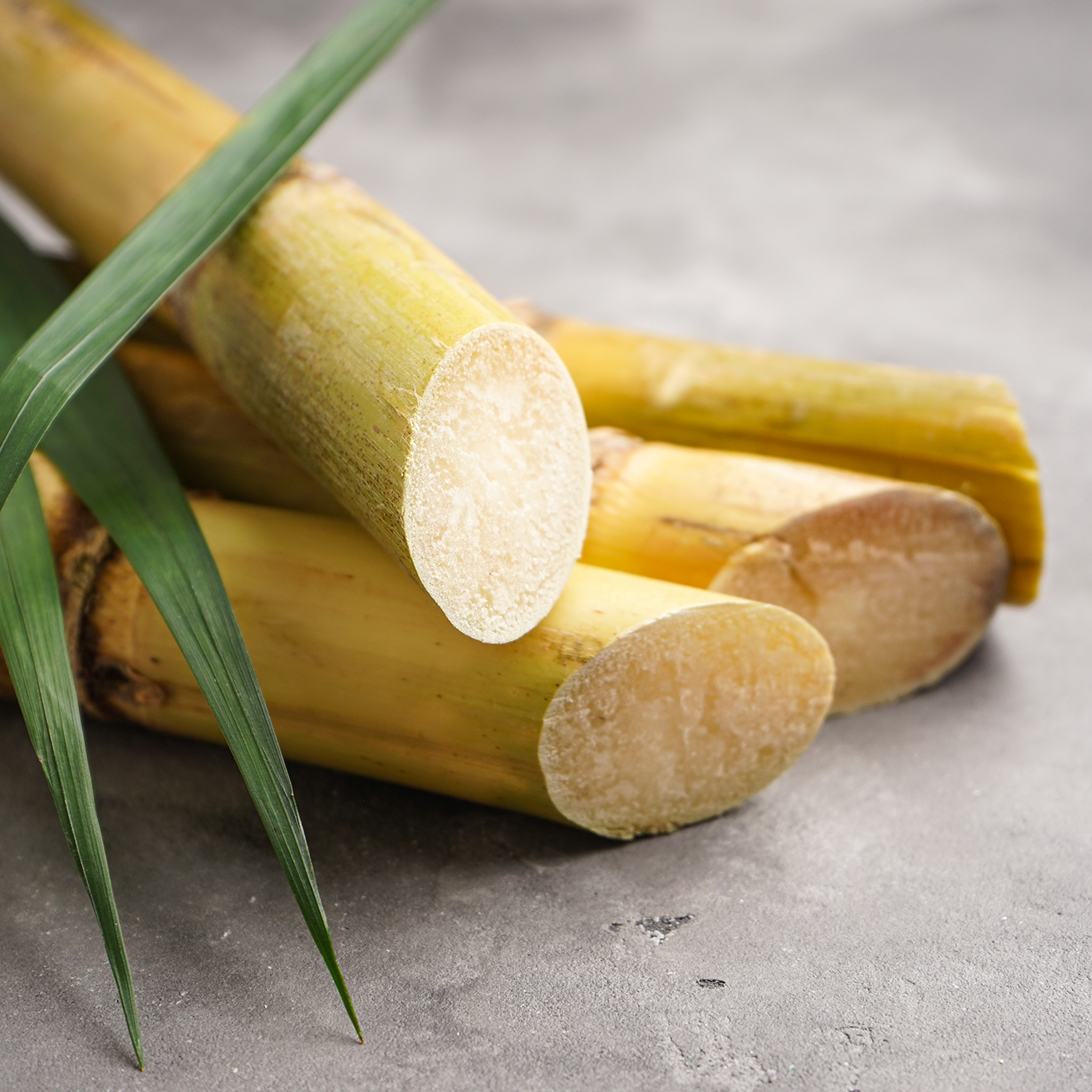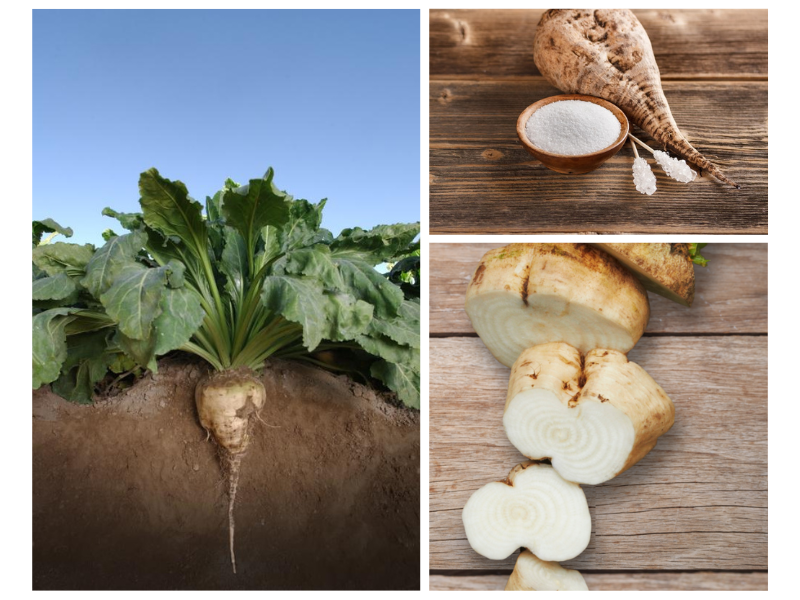Sugar beet vs sugar cane: How farming conditions are affected
Unveiling the Reality Behind Sugar Beet Vs Sugar Cane: Advantages, Makes Use Of, and Processing Techniques Clarified
The distinction between sugar beet and sugar cane is often neglected in discussions about sugar manufacturing. Each plant provides one-of-a-kind benefits and applications in different markets. Their farming practices and handling strategies also differ especially. Understanding these subtleties is vital for stakeholders in the sugar sector. What effects do these distinctions have for wellness, flavor, and environmental impact? Discovering these elements can disclose deeper insights into the international sugar market.

Review of Sugar Beet and Sugar Cane
Sugar beet and sugar cane are two main resources of sugar, each with distinct features and growing techniques. Sugar beet, a root veggie, grows in warm climates and is commonly collected in the autumn. Its high sugar material, varying from 15% to 20%, makes it a beneficial plant for sugar production. The procedure involves extracting juice from the beets, which is then refined into granulated sugar.
On the other hand, sugar cane is an exotic lawn that prospers in cozy, moist environments. It can achieve a sugar content of up to 14%, but its tall, coarse stalks call for extensive processing. The cane is squashed to remove juice, which goes through boiling and formation to generate sugar. Both sources contribute significantly to the global sugar supply, with sugar beet primarily cultivated in Europe and The United States And Canada, while sugar cane is primarily expanded in Brazil, India, and various other tropical regions.
Cultivation Practices: Sugar Beet vs. Sugar Cane
Growing methods for sugar beet and sugar cane differ significantly because of their distinct expanding problems. Sugar beets prosper in cooler environments with well-drained dirt, while sugar cane prefers warmer temperature levels and plentiful wetness. In addition, the harvesting techniques used for every plant reflect these environmental needs and influence total return and high quality.
Expanding Problems Comparison
While both sugar beet and sugar cane thrive in details ecological problems, their growing methods vary considerably. Sugar beet is primarily grown in warm regions, favoring cooler environments with well-drained soil and modest rains. It requires a growing period of concerning 90 to 120 days, with optimal temperatures in between 15 ° C to 25 ° C. In contrast, sugar cane flourishes in tropical and subtropical climates, thriving in cozy temperatures varying from 20 ° C to 32 ° C. It requires plentiful sunlight and regular rainfall, usually needing watering in drier areas. Sugar cane has a much longer growing cycle, usually lasting 12 to 24 months. These differences in growing problems considerably influence the geographical circulation and agricultural techniques related to each plant.
Gathering Techniques Differences
The harvesting strategies for sugar beet and sugar cane reflect their unique growth features and agricultural methods. Sugar beet is commonly harvested mechanically, with harvesters created to root out the entire plant, making sure marginal dirt disturbance. The beetroots are after that carried for handling soon after harvest to maintain high quality. In comparison, sugar cane harvesting often involves a mix of manual and mechanical techniques. Workers might originally reduce the cane by hand, specifically in areas where mechanization is less possible. Consequently, specialized equipment is employed to gather and transfer the cut stalks to processing centers. These varying strategies not just influence performance but likewise influence the top quality and return of the last sugar items, showcasing the adaptability of each plant to its environment.
Nutritional Comparison and Health Perks
When contrasting the nutritional profiles of sugar beet and sugar cane, it comes to be clear that each offers distinct health advantages. Sugar beetroots are rich in crucial nutrients like folate, manganese, and potassium, which contribute to total wellness. They additionally have fiber, which helps digestion and may help regulate blood sugar level levels. Additionally, sugar beetroots are recognized for their antioxidant residential or commercial properties, which can fight oxidative tension.
Alternatively, sugar cane is mainly composed of sucrose, giving fast energy. While it does not have the very same degree of minerals and vitamins found in sugar beetroots, sugar cane my blog does have tiny quantities of B minerals and vitamins such as calcium and magnesium. Sugar cane juice is frequently proclaimed for its hydrating residential properties and potential wellness benefits, including enhanced digestive wellness. Ultimately, the selection in between sugar beet and sugar cane may depend upon individual health and wellness objectives and dietary choices.
Taste Profiles and Culinary Utilizes
Flavor profiles of sugar beet and sugar cane differ noticeably, affecting their culinary applications (Sugar beet vs sugar cane). Sugar cane, with its naturally wonderful and intricate taste, is often favored in drinks, treats, and various culinary recipes. It lends a rich, caramel-like note that improves the taste of things such as syrups, molasses, and rum. In contrast, sugar beet has a much more neutral and less aromatic preference, making it ideal for applications where sweetness is desired without changing the meal's integral tastes. It is frequently utilized in refined foods, baked items, and sugar
Cooking experts usually choose sugar cane for its depth and richness, especially in premium food preparation and craft drinks. Conversely, sugar beet's flexibility as a sweetener in mass-produced items accommodates a wider market. Eventually, the option between these two sugars can significantly impact flavor accounts and total cooking experiences.
Environmental Effect of Sugar Production
Sugar production, whether from sugar beet or sugar cane, carries substantial ecological effects. Sugar cane cultivation typically results in deforestation, particularly in exotic regions, interfering with neighborhood ecological communities and adding to biodiversity loss. The substantial usage of plant foods and pesticides in both sugar beet and sugar cane farming can result in dirt destruction and water contamination, influencing bordering habitats and areas. In addition, the high water usage needed for sugar cane irrigation presents a risk to regional water materials, especially in dry areas.
Conversely, sugar beet farming normally happens in warm climates, which might reduce some logging worries. Nonetheless, it is not without its own obstacles, including soil disintegration and reliance on chemical inputs. Overall, the ecological effect of sugar manufacturing is multifaceted, demanding sustainable farming methods and understanding of source management to reduce damage to ecosystems and promote ecological health.
Processing Methods: From Plant to Sugar
Numerous processing strategies are utilized to change sugar beet and sugar cane into granulated sugar, each technique mirroring the distinct attributes of the source plant. For sugar beetroots, the procedure begins with cleaning and cutting the roots into slim strips, which are after that subjected to diffusion-- a method where warm water extracts sugar from the beet slices. The resulting liquid is purified, concentrated, and crystallized.
In comparison, sugar cane processing includes squashing the stalks to remove juice, followed by information to remove pollutants. The juice is then vaporized, resulting in syrup that undertakes crystallization. Both procedures are followed by separation of the sugar crystals from the molasses, which is a by-product. The lasts include drying out and packaging the granulated sugar for circulation. These techniques highlight the distinctive pathways whereby these 2 plants generate sugar, each with its very own set of challenges and effectiveness.
Financial Elements of Sugar Beet and Sugar Cane Industries
The economic landscape of the sugar beet and sugar cane industries discloses noteworthy differences in manufacturing prices, market dynamics, and regional influences. Sugar beet, primarily expanded in warm environments, often incurs greater manufacturing expenses because of labor and input expenditures. On the other hand, sugar cane thrives in exotic areas, typically taking advantage of reduced labor costs and positive climatic problems, which can result in higher returns.
Market dynamics also differ, as sugar cane dominates international manufacturing, making up roughly 80% of sugar output. This prevalence affects prices structures and trade flows. In comparison, sugar beet is extra regionally focused, specifically in Europe and North America, affecting neighborhood economic situations depending on beet manufacturing.
Changes in international sugar rates can considerably impact both sectors, affecting farmer revenue and financial investment levels. Recognizing these economic elements is necessary for stakeholders aiming to browse the complexities of the sugar market successfully.

Regularly Asked Questions

Can Sugar Beet and Sugar Cane Be Intercropped Successfully?
Intercropping sugar beet and sugar cane offers obstacles as a result of differing growth needs and environmental demands. With cautious monitoring and appropriate conditions, it might produce benefits such as improved dirt health and wellness and source performance.

What Are the Historic Beginnings of Sugar Beet and Sugar Cane?
The historical beginnings of sugar beet trace back to 18th century Europe, while sugar cane has origins in Southeast Asia, cultivated for hundreds of have a peek at this site years. Both plants have view publisher site actually considerably affected global sugar manufacturing and agriculture.
Exactly How Do Sugar Beet and Sugar Cane Affect Soil Wellness?
The impacts of sugar beet and sugar cane on soil wellness differ. Sugar beet can boost dirt structure and nutrient web content, while sugar cane may diminish nutrients otherwise managed appropriately, affecting lasting dirt fertility.
Exist Any Type Of Emerging Technologies in Sugar Production?
Arising innovations in sugar manufacturing consist of precision farming, advanced genetic modification for greater yields, and ingenious extraction methods. These innovations aim to improve effectiveness, reduce environmental influence, and boost the total sustainability of sugar production processes.
What Are the Key Differences in Labor Demands for Both Plants?
The key distinctions in labor demands for sugar beet and sugar cane hinge on growing, harvesting, and handling. Sugar beet vs sugar cane. Sugar beet typically requires even more automation, while sugar cane frequently requires extra manual labor for harvesting and processing stages